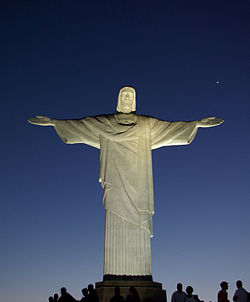 |
| Reza Aslan (Photo by roanokecollege) |
Although Reza Aslan is currently a Muslim, this hasn't at all dampened his enthusiasm for mulling upon the historical Jesus.
This Muslim (turned Christian, turned Muslim again) is the author of a book titled Zealot: The Life and Times of Jesus of Nazareth. During a recent interview with Lauren Green of Fox News, Aslan was repeatedly asked questions of this ilk: What's a Muslim doing
writing a book about Jesus?
Each time that Green perseverated on this line of inquiry, Aslan responded with statements like these: "I'm an historian…
I have a Ph.D. in the Sociology of Religion… I have a
Master's Degree in Theology…"
None of that helped to quiet Green down. She just couldn't get past the "Muslim" part of Aslan's bio long enough to hear what he was actually saying (even though many a Christian Fox News reporter has issued many a statement about Islam).
Nor could Green get past Aslan's current religious affiliation long enough to mindfully discuss what his book was actually about…
If she had, she might have realized that there were some actual weighty points to discuss – such as Aslan's claim that Jesus was "a troublemaker" (for starters).
As for Aslan? He explains
his preoccupation with Jesus in this manner:
It's the fact that he was such a
troublemaker that I
think makes him so compelling.
Resources
http://www.today.com/books/jesus-book-hits-no-1-wake-viral-fox-news-interview-6C10805955#jesus-book-hits-no-1-wake-viral-fox-news-interview-6C10805955
Copyright July 31, 2013 by Linda Van Slyke All Rights Reserved



















_ASEAN_svg.png)





_retouched.jpg)
.jpg)
